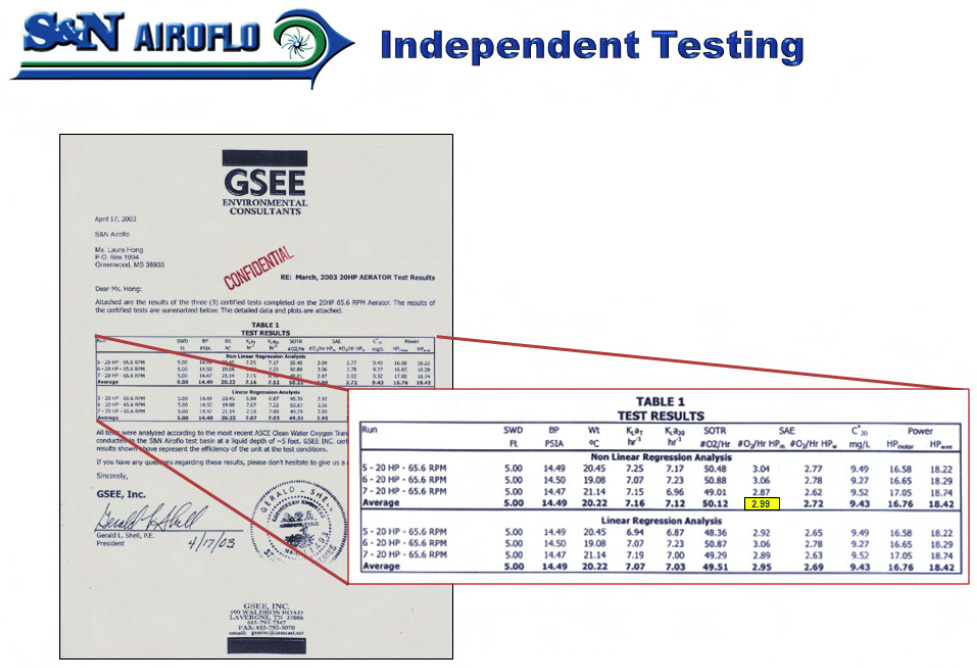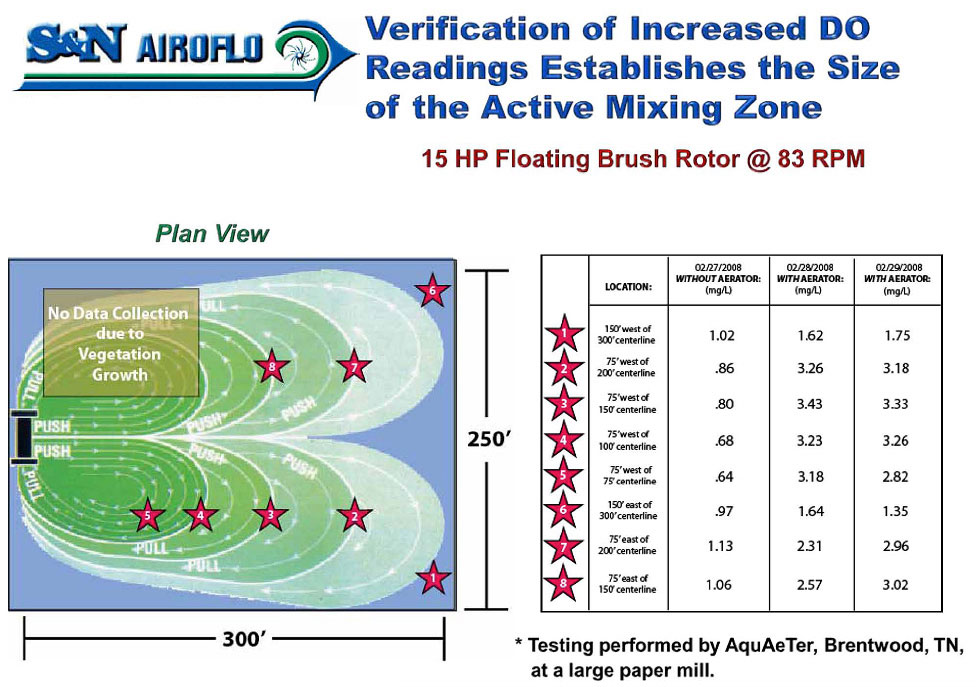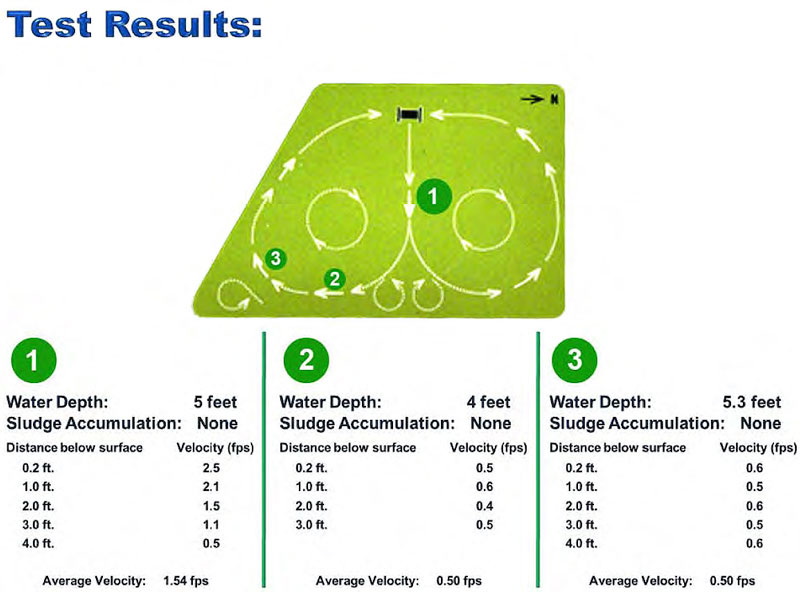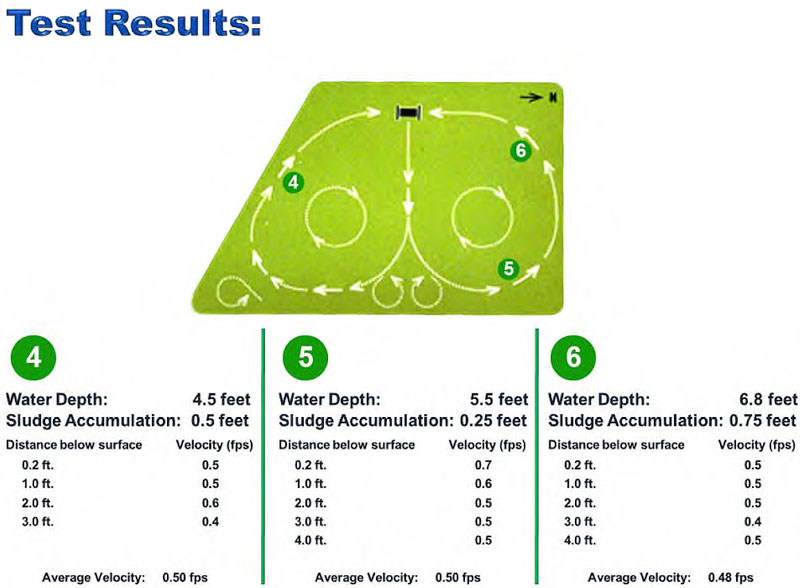Performance
Performance O2 Transfer and Mixing
Rotors

- S&N Airoflo Rotors differentiate HP through six different rotor lenghts (3.5′ to 12.5′) and two different diameter (36″ and 42″)
- The offset between the blades in a row is the same on all S&N Airoflo Rotors. The offset was refined to produce an aggresive spiral at maximum submergence for greater pumping.
- The S&N Airoflo Rotors alternate blade lengths to enhance O2 transfer.
Blade Design Elements and Benefits

Blade Design
C-shaped base extends vertically to form a deeply cupped channel that tapers to a slight curved tip.
Blade Performance
Tapered tip easily transfers energy to the water and the channel shape traps the water and pushes it away from the rotor.
Blade Strength
Sides of the blades serve as gussets to reinforce the vertical strength of the blades and take pressure off the welded joints.
Maximizing Performance

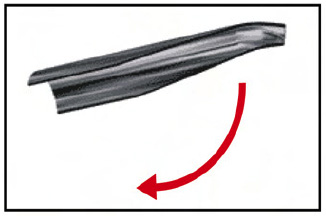
- Like an Olympic swimmer maximizing his stroke, the cupped shaped blade improves the performance.
- Higher O2 transfer
- Better Mixing
Performance Summary
Higher Pumping Rates Deliver:
• Higher O2 Transfer
• Improved Mixing Efficiency
Primary Phase of the Oxygen Transfer Process

Air cavity forms behind blades entering water

The air cavity is dispersed into bubbles by the trailing blades.
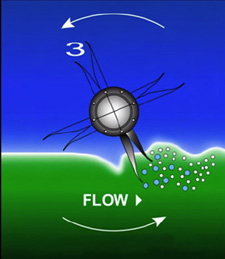
Oxygen transferred to water flows away as the next cycle of blades prepares to enter the water.
Secondary Phase of the Oxygen Transfer Process

Spraying water into the air provides a second source of aeration, making the equipment highly efficient for O2 transfer.
The S&N Airoflo Floating Brush Rotors enhance biological treatment using less HP than most conventional mechanical aerators.
High oxygen transfer rates
- 3.0 lb oxygen/HP-hr ASCE (clean water test)
- 2.3 lb oxygen/HP-hr (field adjusted transfer rate)
Excellent mixing and high pumping rates
- 2100 gpm per HP (field adjusted pumping rate)
Energy savings
- 30 to 60% lower HP requirements for oxygen demand
- 50% less HP required for pumping / mixing
- Operates at 90% of rated HP
Regulatory Approval

• In 1989, S&N Airoflo requested an approval for the use of its rotors at 4 HP/mg vs. the state standard of 8 HP/mg.
• S&N Airoflo supplied O2 transfer and mixing tests performed at Auburn University to the Mississippi Department of Natural Resources, who in turn forwarded the information to Region IV Department of Environmental Quality in Atlanta, GA.
• S&N Airoflo units approved for 4 hp/mil gal partial mix – one half of the original 8 hp/mil gal.
• Ruleville, MS – first WW installation. MDEQ suggested S&N equipment. Add 200 households to system.
Placement Effects on Treatment

Modified Raceway
• 7 acre facultative lagoon converted to raceway design
Influence of Placement
• Eliminates short-circuiting
• Completely mixes the influent and exposes it to O2


Serpentine Flow Pattern
• Water moves from unit to unit
• Independent Mixing Zones
• Creates separate zones of mixing and treatment
• Prevents short-circuiting


Multi-Cell Facility: Soft Drink Plant
Gulf State Canners, Inc. – Clinton, MS
Velocity Test
Performed by:
Dennis D. Truax, PhD., P.E., D.E.E.
Department of Civil Engineering
Mississippi State University
• One 10 HP unit operating
• Approx. 0.4 surface acres (0.7 mil gal @ 14 HP/mg)
• Approx. 7 ft. at deepest point
• Velocity and sludge accumulation measured
• Collected at 7 points by two people in a rope-stabilized boat using a digital velocity meter

